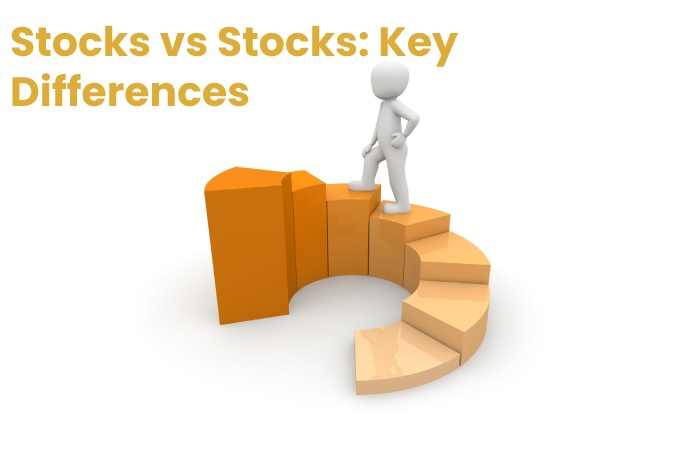Table of Contents
Share and Stock – What is Stock?
Share and Stock – Stocks are securities that signify partial ownership in one or more companies. By buying company shares, you become a shareholder in that company. A stock certificate acts as proof of ownership and states how many shares you own. You can buy shares of one company or several companies.
Generally, investors want to buy shares of companies that have the potential to increase their value. When such appreciation occurs, the shareholder can sell the stock and make a profit. Additionally, due to their partial ownership, shareholders often receive a portion of the company’s earnings through monthly, quarterly, or annual dividend payments. So buying stocks is a profitable way to make money and reduces the effect of market inflation over a period.
Also Read: Cloud Migration – Introduction, Strategies, Benefits, and More
Share and Stock – What is a Share?
A share is the smallest class of a company’s stock. Therefore, each stock unit is one share, and each share of stock equals one piece of company ownership.
Person X owns “100 shares of ABC Inc.”. If ABC Inc. has a million shares, X owns 0.1% of the company. No matter how many shares they own, any person or entity that owns 10% of the ownership in a corporation is called a significant shareholder.
People who buy shares can earn interest on the invested money and the dividends. But it’s part of their motivation to invest in a company. The second reason is that their investment in the company increases the value of the company, which in turn raises the price of shares. Shareholders can then sell these shares for more than the purchase price to make money from their investment.
Also Read: Position Trader – Introduction, Strategies, Advantages, and More
Share and Stock – Type Of Stock
There are Two Main kinds of Shares: Common Stock and Preferred Stock.
Ordinary Shares: Ordinary equity investors have the right to vote at shareholder meetings. They have a direct pale in the company and receive the company’s profits at regular intervals.
Preferred Stock: Preferred stockholders are not given voting rights. However, they receive dividend payments before the common shareholders. This class of investors is given higher priority than ordinary shareholders if the company goes bankrupt.
Also Read: Engine Hot AC Off – Introduction, Signs, Causes, and More
Ordinary and Preferred Shares are Divided into the Following Categories:
Growth Stocks: Stocks in this category tend to grow and earn faster than the general market average. Since they rarely offer dividends, the appreciation of the capital is what investors expect. A start-up tech company may offer these types of stocks.
Income Stocks: These stocks pay fixed dividends and help the investor generate regular income. An example of shares of an established utility company would be income shares.
Value Stocks: These stocks usually have a low price-to-earnings (PE) ratio. Therefore, it is much cheaper than those with higher proportions of polyethene. It can be either growth or income stocks. People who buy value stocks expect the stock price to rebound soon.
Preferred Stocks: These are stocks of large, well-known companies with a strong growth history. Usually, such shares pay dividends, and preferred shares are popular among investors due to the company’s credibility.
Additionally, stocks can be classified based on market capitalization and volume. There are large, medium and small stocks. While stocks of smaller companies are called small-cap stocks, stocks with lower prices are known as penny stocks.
Also Read: 29 Degrees Celsius to Fahrenheit – Easiest Method to Convert
Share and Stock – Type Of Share
Companies can issue different types of shares depending on their rights and characteristics. There are two popular types which are common stock and preferred stock.\
Common Stock: A common stock is a primary type of stock that can be classified into different classes based on voting rights. For example, take the case of Class A and Class B shares. Class A common shares may come with one voting right per share. However, Class B shares can have ten voting rights per share.
Preference Shares: Preference shares are a less common type of stock that operates similarly to bonds. They give guaranteed dividends to their holders and ensure priority over the company’s assets in the event the company goes out of business.
Also Read: Inventory – Introduction, Types Of Inventory, and More
Stocks vs Stocks: Key Differences

Here are some of the vital points of difference between a stock and a stock:
Definition: “Shares” represents partial ownership by the holder in one or more companies, and meanwhile, ‘sharing’ refers to a single ownership unit in the company. For example, if X invests in stocks, it could mean that X has a portfolio of stocks in different companies. But if X invests in stocks, next question should focus on “what shares of the company” or “how many shares”.
Ownership: When a person owns shares in several companies, you can say that he owns shares. But if a person buys shares in a particular company, he only has the shares.
Classes: Individuals who own the shares can choose different claims with different courses. Those who own shares in a particular company can certainly own multiple shares. But the stakes will only be of equal or equal value.
Paid value: Shares are always fully paid in nature. However, the shares can be either partially or fully paid up.
Par value: The value assigned to each share when the stock is issued. It differs from the market price, which varies according to the demand and supply of the claims.
Investment Type: Stocks refer to a large group of financial instruments known as securities. These can include mutual funds, exchange-traded funds (ETFs), limited partnerships, real estate investment trusts, etc. But equities refer specifically to shares of companies and securities traded on the stock exchange.
Also Read: 0.35 Eth to USD – Introduction, Convert 0.035 ETH to USD, and, More
Conclusion
The distinction between stocks and shares is not clear in the financial markets. In American English, the two terms are used interchangeably to refer to financial stocks, specifically securities, which refer to ownership in a public company. (In the old days of paper transactions, these were stock certificates.) Nowadays, the difference between the two words is more related to the syntax and is derived from the context in which they are used.
Also Read: 53 C to F – Introduction, Conversion, Definition, and More

